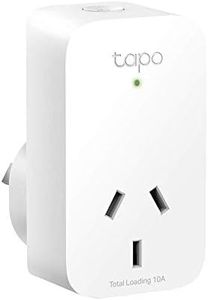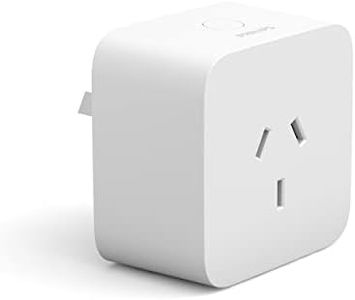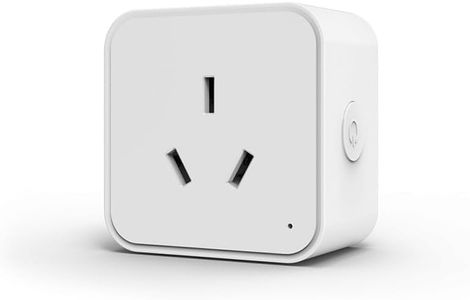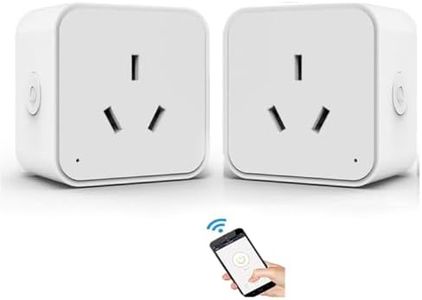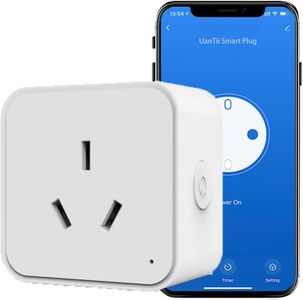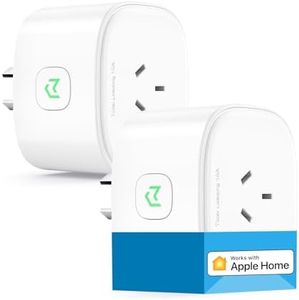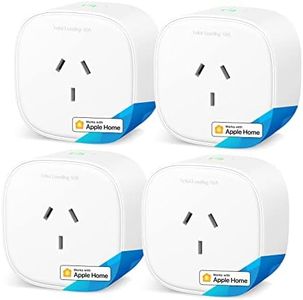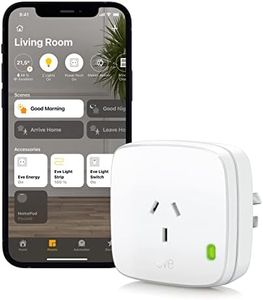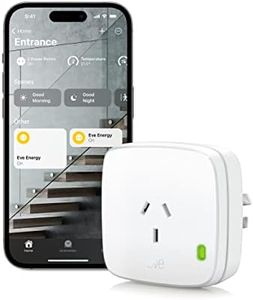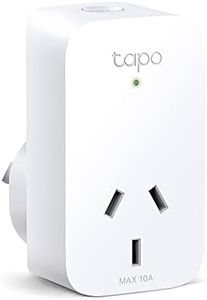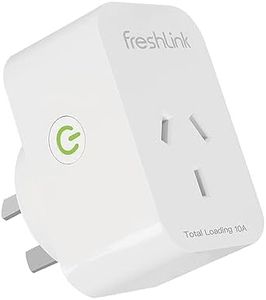We Use CookiesWe use cookies to enhance the security, performance,
functionality and for analytical and promotional activities. By continuing to browse this site you
are agreeing to our privacy policy
10 Best Smart Plugs
From leading brands and best sellers available on the web.Buying Guide for the Best Smart Plugs
Smart plugs are small devices that plug into your regular wall outlet, allowing you to turn appliances and electronics on or off remotely via your phone, voice commands, or automated schedules. Selecting the right smart plug makes controlling your home easier and can help manage energy use. To find a model that suits your needs, it's important to understand the key features and how they align with your specific uses, such as controlling lamps, coffee makers, fans, or other appliances.ConnectivityConnectivity tells you how the smart plug communicates with your devices or home system. This can be through Wi-Fi, Bluetooth, Zigbee, or Z-Wave. Wi-Fi plugs connect directly to your home network and are usually easy to set up, while Bluetooth options may work without a hub but generally have limited range. Zigbee and Z-Wave plugs require a separate hub but can be more reliable in connected smart home environments. Choose Wi-Fi if you want a simple and straightforward setup, but consider Zigbee or Z-Wave if you already use smart home hubs. Think about your current devices and how you plan to control the plug when picking the right connectivity option.
Maximum Load/Power RatingThis spec defines how much electrical power the smart plug can safely handle, usually measured in amps (A) or watts (W). It's important because plugging in an appliance that draws too much power can damage the smart plug or cause a safety risk. Smart plugs typically range from about 10A (good for smaller lamps and chargers) to 15A or more (better for heavier appliances like heaters or coffee makers). Check your appliance’s power needs and make sure the plug's rating is equal to or higher than your device's requirement.
CompatibilityCompatibility refers to which apps, smart home systems, and voice assistants the smart plug works with. Some plugs only work with specific ecosystems like Alexa, Google Assistant, or Apple HomeKit, while others are more flexible, supporting multiple systems. Make sure the smart plug you pick can be controlled from the devices or voice assistants you already use at home. If you plan to control your plug by voice or with a specific app, double-check for compatibility with that ecosystem.
Scheduling and Automation FeaturesScheduling and automation let you set the plug to turn on or off at given times or based on certain conditions, like sunrise or sunset. Some models have very basic timer functions, while others offer more advanced routines and integration with other smart home actions. If you want to automate routines or add security by simulating occupancy, ensure the plug offers the kind of flexible scheduling or automation features you need.
Size and DesignThe physical size and shape of a smart plug can impact nearby outlets and how many plugs you can use together. Bulkier designs might block adjacent outlets, which can be inconvenient. Slim or compact plugs are a better choice if you have crowded power strips or tight wall sockets. Think about where you’ll use the plug and whether space is limited; choose a compact design for tighter spaces.
Energy MonitoringSome smart plugs come with energy monitoring, which tracks the amount of electricity used by plugged-in devices. This feature is useful if you want to keep an eye on energy consumption, save on electricity bills, or monitor usage patterns. If you’re interested in tracking and managing energy use, look for a plug that includes reliable monitoring features; if this isn’t important to you, a simpler model may suffice.

